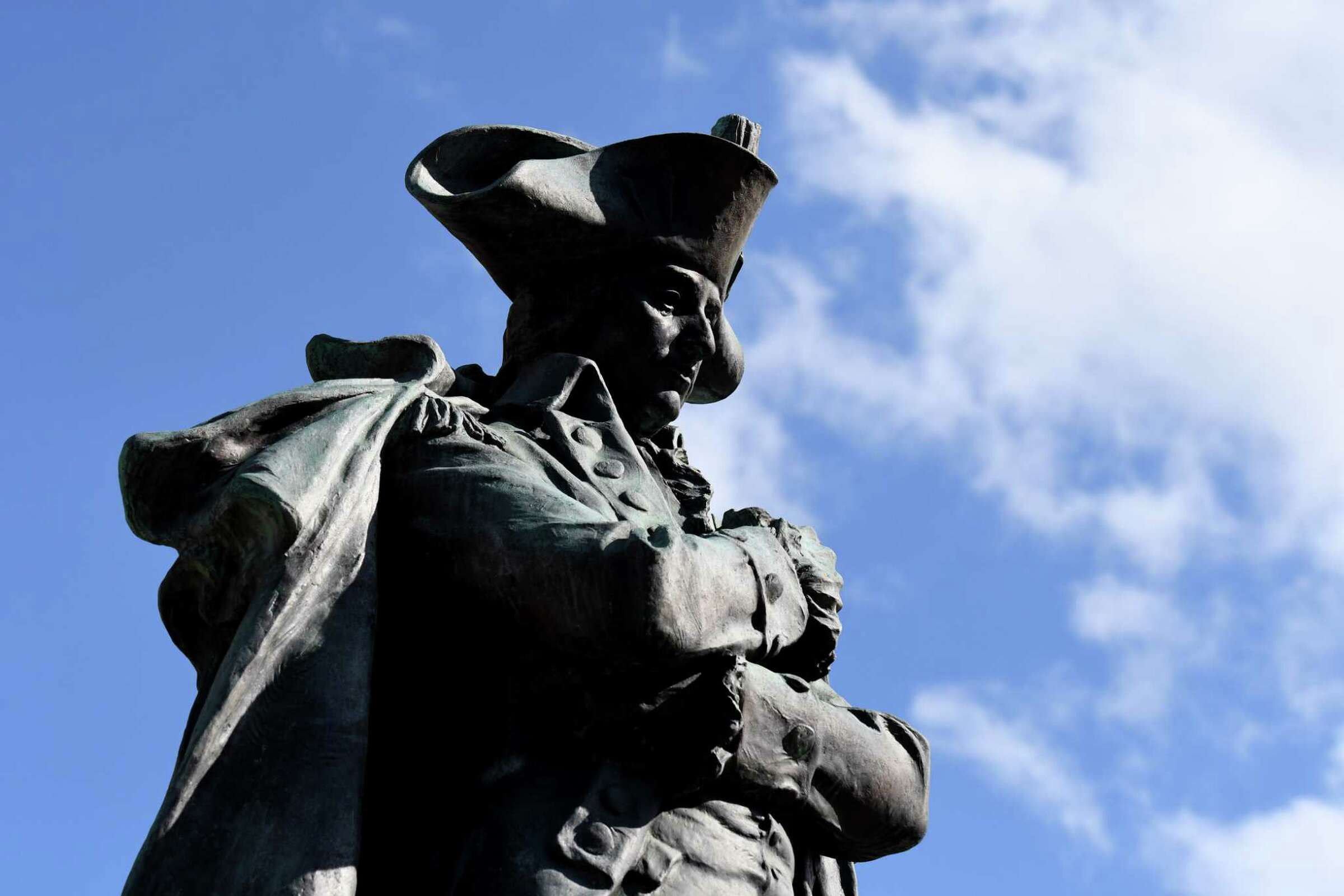Gen. Schuyler statue to go in storage as committee determines next location
By H. Rose Schneider
for the Times Union

A statue of Gen. Philip Schuyler statue is displayed in front of Albany City Hall on Thursday, June 11, 2020, in Albany, N.Y. Mayor Kathy Sheehan announced Thursday that the city will be taking down the well known statue in response to calls about Schuyler’s history as a slave owner.
(Will Waldron/Times Union)
ALBANY — A statue of Maj. Gen. Philip Schuyler outside City Hall is set to come down in a matter of weeks, city officials confirmed Friday.
Plans to remove the statue of Schuyler — known as a Revolutionary War hero but also an enslaver of Black people — began in June 2020 in the wake of the death of George Floyd, when Albany Mayor Kathy Sheehan ordered the statue be removed by the city Department of General Services “as soon as possible.” Her executive order stated it would be given to a museum or other accredited institution. The mayor’s office said earlier this year that the cost of removing the statue would be $40,000.
Renewed plans to remove the statue nearly three years later stem from a report by students with the Young Abolitionist Leadership Institute at the Underground Railroad Museum, the mayor’s Chief of Staff David Galin said in an email Friday. The report recommends the city form a commission to determine the future site of the statue. In the meantime, the city will remove the statue in the coming weeks and place it in storage, Galin said. The traffic circle in front of City Hall will also be removed to improve pedestrian access, and repairs to the roof and exterior are also planned.
The report, titled, “What To Do with Phil? – A 2022 Report from the Young Abolitionist Leadership Institute,” was created by five Albany High School students who met between October 2021 and June with two adult facilitators. While the report notes Schuyler’s accomplishments as a Revolutionary War general and politician, his legacy is still marked by owning human beings, it says.
“As a man heavily invested in the institution of enslavement YALI teens maintained that he was able to accomplish what he is remembered for because he depended upon those enslaved to him to carry out those tasks that freed him up to focus on other matters,” the report states. “His accomplishments were possible because he stood on the shoulders of those who were enslaved to him.”
Continue reading at the Times Union

